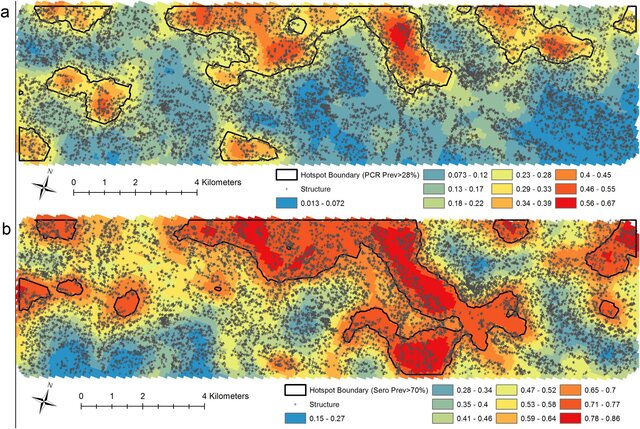Model-based Geostatistics

This course provides a comprehensive introduction to Model-based Geostatistics, with a focus on applications in global public health and environmental science. The course on the applications of geostaistical methods while keeping the mathematical content to the minimum level required. The course is taught using the R software environment.
Learning Outcomes
By the end of this course, students will be able to:
- Understand the theoretical foundations of model-based geostatistics.
- Perform exploratory analysis of spatial data using R.
- Fit and interpret geostatistical models.
- Perform geostatistical prediction in answer to a given public health questions.
R packages
- Essential:
RiskMap,rgeoboundaries,ggplot2,sf,terra,elevats - Desireable:
shiny
Install RiskMap in R by running devtools::install_github("giorgilancs/RiskMap")
Install rgeoboundaries in R by running remotes::install_github("wmgeolab/rgeoboundaries")
Course Content
You can download all the R scripts used in the slides here.
1. Introduction
An overview of geostatistical problems in the context of epidemiological studies.
2. Exploratory Analysis
Exploring regression relationships, overdispersion and spatial correlation.
- Slides
- Exercise, raster files for the analysis and solution
3. Model Formulation and Parameter Estimation
How to formulate and fit geostatistical models using Monte Carlo Maximum likelihood.
4. Geostatistical prediction
How to predict health outcomes using geostatistical models, at pixel- and areal-level.
Prerequisites
- Basic knowledge of the basics of probability.
- Good knowledge of generalized linear models.
- Familiarity with R programming (or willingness to learn).
- No prior experience with geostatistics is required.
How to Use This Material
- Each section includes lecture notes, code examples, and exercises.
- The materials are designed to be self-paced, but they can also be used in a classroom setting.